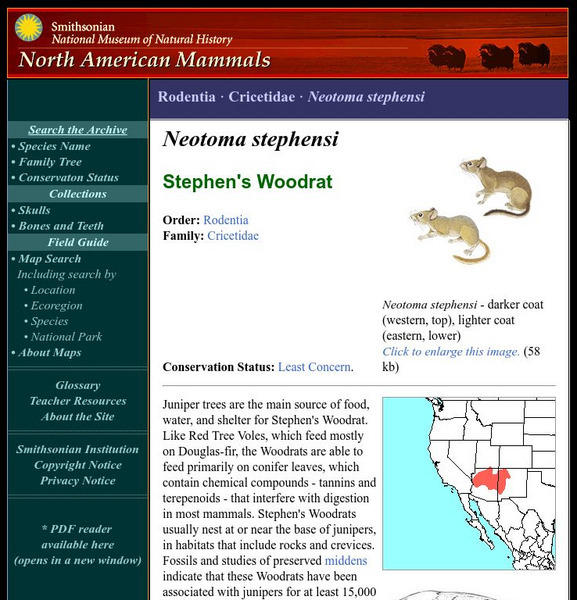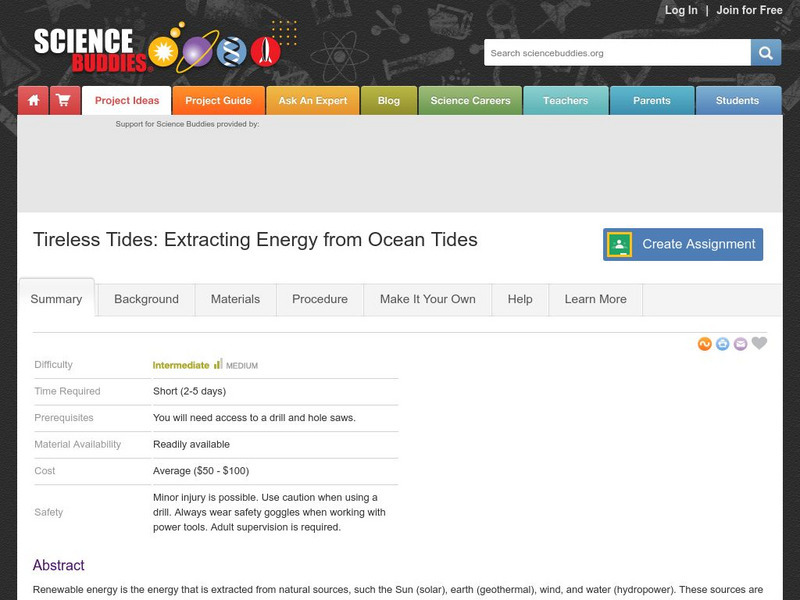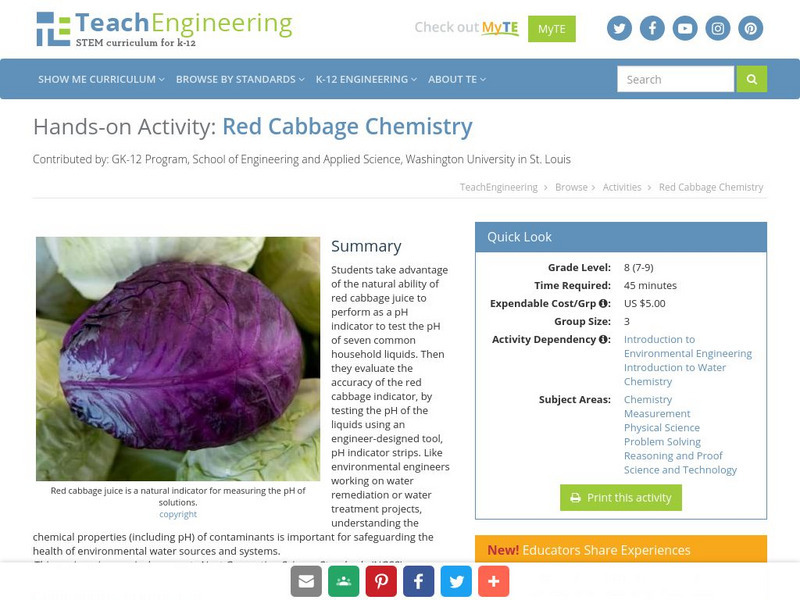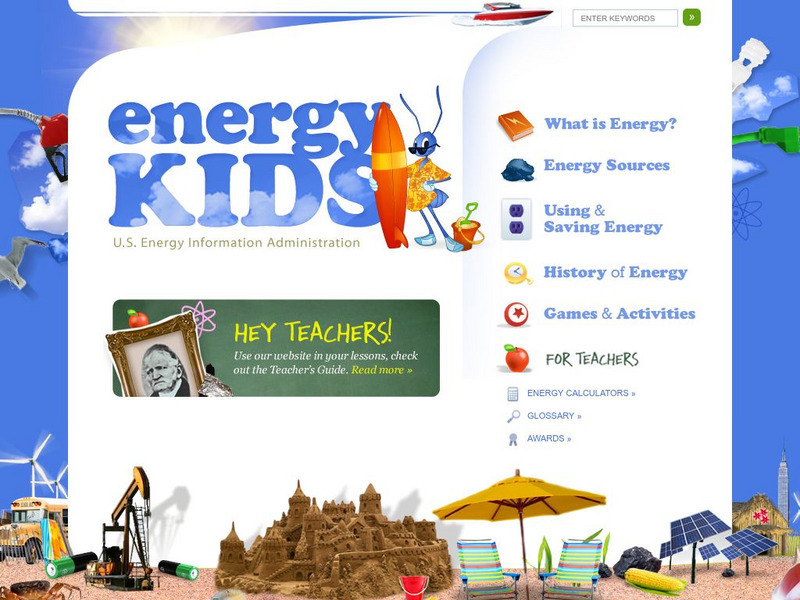Hi, what do you want to do?
Louisiana Department of Education
Louisiana Doe: Louisiana Believes: Ela Unit: Grade 2: Thirsty Planet
Second graders learn about the water cycle and the role of water in nature. Through various descriptions of water's journey throughout the world and the lives that depend on it for survival, 2nd graders come to appreciate the importance...
TeachEngineering
Teach Engineering: Engineering for the Earth
Young students are introduced to the complex systems of the Earth through numerous lessons on its natural resources, processes, weather, climate and landforms. Key earth science topics include rocks, soils and minerals, water and natural...
Smithsonian Institution
National Museum of Natural History: American Mammals: Stephen's Woodrat
Juniper trees are the main source of food, water, and shelter for Stephen's Woodrat. Like Red Tree Voles, which feed mostly on Douglas-fir, the Woodrats are able to feed primarily on conifer leaves, which contain chemical compounds -...
Science Buddies
Science Buddies: Tireless Tides: Extracting Energy From Ocean Tides
Renewable energy is the energy that is extracted from natural sources, such the Sun (solar), earth (geothermal), wind, and water (hydropower). These sources are renewable because they can be replenished by the same natural sources within...
TeachEngineering
Teach Engineering: Red Cabbage Chemistry
Students take advantage of the natural ability of red cabbage juice to perform as a pH indicator to test the pH of seven common household liquids. Then they evaluate the accuracy of the red cabbage indicator, by testing the pH of the...
Library of Congress
Loc: Geography and Its Impact on Colonial Life
European settlement patterns were influenced by geographic conditions such as access to water, harbors, natural protection, arable land, natural resources and adequate growing season and rainfall. Examine a variety of primary sources to...
US Energy Information Administration
U.s. Eia Energy Kids
This extensive resource provides information on renewable energy, nonrenewable energy and energy conservation.
Curated OER
Unesco: Colombia: Malpelo Fauna and Flora Sanctuary
Located some 506 km off the coast of Colombia, the site includes Malpelo island (350 ha) and the surrounding marine environment (857,150 ha). This vast marine park, the largest no-fishing zone in the Eastern Tropical Pacific, provides a...
Library of Congress
Loc: Geography and Its Impact on Colonial Life
European settlement patterns were influenced by geographic conditions such as access to water, harbors, natural protection, arable land, natural resources and adequate growing season and rainfall. Examine a variety of primary sources to...
Energy for Sustainable Development
Kids and Energy: Hydro Energy
Hydropower is a clean, renewable and reliable energy source which converts kinetic energy from falling water into electricity, without consuming more water than is produced by nature. Quite simply the oldest method by which renewable...













